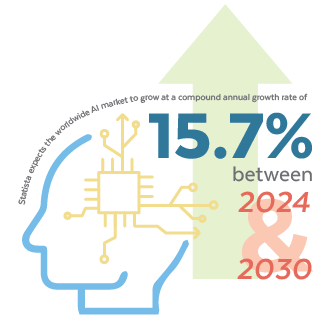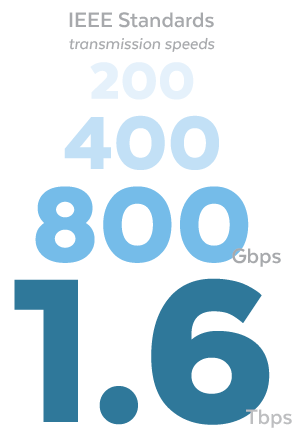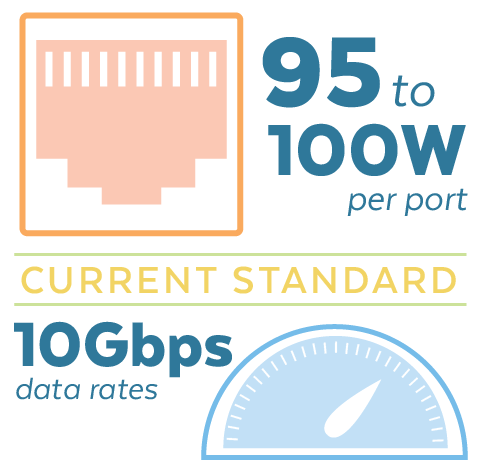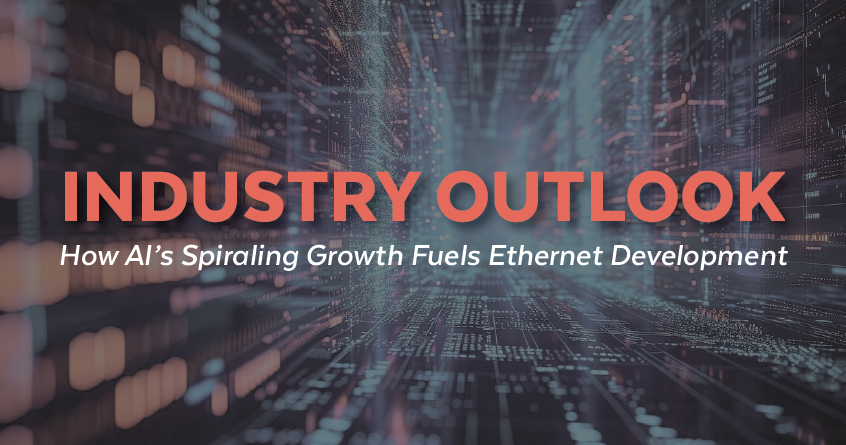The Ethernet Alliance Weighs in on User Demands in the Coming Years
Artificial intelligence (AI) has existed for more than half a century. While initial attempts failed to meet expectations, ongoing development eventually brought AI technologies to market. Retailers such as Amazon made recommendations based on consumer data. Financial services began using AI to customize investment strategies. Industries saw how AI could improve customer experience, increase efficiency, and reduce operational costs. However, not all industries or companies are in a position to deploy AI technologies. Some businesses may lack the IT infrastructure needed to support today’s AI. Today’s offerings go far beyond a mere set of algorithms. Modern AI products require that lots of data be transmitted at high speed, with the computing power necessary to deliver results with certainty. Since most of today’s networks rely on Ethernet technologies, the question naturally arises: how will Ethernet development keep pace with AI’s spiraling growth?
AI Market Growth
Statista expects the worldwide AI market to grow at a compound annual growth rate of 15.7% between 2024 and 2030. Its primary markets will include healthcare, financial services, manufacturing, transportation, and security. Other industries will adopt the technologies as big data improves, algorithms refine, and infrastructure expands.
Big data creates enormous opportunities for AI applications. Data quality and collection methods have improved markedly, so AI algorithms now have access to a massive amount of data for training and learning. With the move towards cloud computing, infrastructures have become more powerful and efficient, allowing AI applications to deliver real-time results.
Labor shortages, higher inflation, and supply chain disruptions have forced industries to consider automation as a way of optimizing resources. Whether in manufacturing or transportation, AI applications let companies achieve their full potential through resource reallocation and process automation. Service businesses can use AI applications to improve customer experiences. Virtual assistants and chatbots have advanced from prescribed, routine interactions to personalized customer conversations.
As AI applications increase, so will the demand for better data collection, faster transmission speeds, and increased computing power. Collaboration between technology companies, governments, and research institutions will be needed to ensure innovation and growth.
Ethernet Development
Ethernet technology has been a crucial component of networking for decades. Most office buildings are a maze of Cat 5 and 6 cables. Factory floors use Ethernet to streamline their operations. IP cameras leverage Ethernet for better security. Although many think of 10, 100, or 1,000 Mbps as the maximum Ethernet speed, current standards push for speeds above 200 Gbps.
According to the Ethernet Alliance, Ethernet technologies will continue to speed up. The Institute of Electrical and Electronics Engineers (IEEE) is working on standards supporting transmission speeds of 200 Gbps, 400 Gbps, 800 Gbps, and 1.6 Tbps. The newly-formed Ultra Ethernet Consortium, which includes technology companies such as Cisco, Broadcom, Intel, Meta, and Microsoft, aims to “deliver an Ethernet-based open, interoperable, high performance, full-communications stack architecture to meet the growing network demands of AI & HPC at scale.”
Pushing more data through faster pipelines consumes more power, increases costs, and presents heat-related performance issues. Emerging technologies such as Linear Drive Pluggable Optics (LPO), Coherent Optics, and Liquid Cooling are attempting to address these concerns. However, the Ethernet industry must also ensure that solutions are energy-efficient, sustainable, and adaptable.
The Ethernet Alliance promotes the use of Ethernet technology in all its forms. The organization is dedicated to Ethernet’s continued success and advancement, whether in conjunction with fiber-optic or wire cables. Ethernet serves as a link between vendors, researchers, users, and governments to bring standards to the marketplace and stimulate innovation.
Power Over Ethernet (PoE) Development
As a subset of Ethernet technology, PoE delivers both power and data over a single Ethernet cable. Any device powered by PoE technology becomes a powered device (PD). Devices may include wireless access points, VoIP phones, or IP security cameras. PoE technology has also advanced to support devices that require more robust power and data support, such as:
- LED Lighting
- Digital Signage and Displays
- IoT Devices
- Access Control Card Readers
- IP Speakers
For PoE to function, power-sourcing equipment such as switches, hubs, or injectors must be used. A PoE network switch can power any connected PoE device. If a non-PoE enabled switch is used, a PoE midspan device, such as a PoE injector, can be placed between the switch and the device.
PoE Advances
PoE technology can now handle faster transmission rates for both power and data. Currently, 95-100W per port and 10 Gbps data rates are the standard. These increases allow the deployment of more robust devices such as laptops and virtual reality (VR) systems. PoE technology also integrates AI algorithms into devices for more efficient and cost-effective solutions. AI-enabled PoE devices can automatically adjust output by monitoring real-time network traffic and device usage.
PoE in the enterprise has seen rapid growth. Campus Ethernet grew 40% in the first quarter of 2023. Remote deployment of IoT devices has increased as companies continue to expand their networks. Because PoE requires a single Ethernet connection without a separate power source, devices can be placed in otherwise cost-prohibitive locations.
Building an AI Network with AI
No two networks are the same. Every infrastructure must be customized to address specific needs. For example, in-vehicle connectivity requirements differ from those of an enterprise that spans the globe. This nascent flexibility has made Ethernet technology the backbone of most networks.
Today’s AI networks begin at the edge, collecting data from hundreds of IoT devices. Data is processed at the edge or forwarded to a network node. AI may be present in the device, the node, or a data center. How far the data travels and in what volume determines the appropriate pipeline.
Nowhere are AI applications more critical than in network monitoring. As more organizations use AI in business applications, the demand for faster and more efficient networks grows. When networks expand to meet AI requirements, they become more complex, requiring more AI applications to monitor performance. Suddenly, the technology that demands improved network performance is the same technology that can identify potential bottlenecks and load imbalances.
Suppose a construction company deploys PoE-enabled security cameras at a building site. Deploying an AI application at the edge keeps the data local for faster response times. The network doesn’t get bogged down sending high-resolution images to a central location.
In this scenario, an AI algorithm could also identify key performance indicators and forward the data to a location for consolidation and evaluation at an enterprise level. The network-wide assessment could determine the most cost-effective solutions for meeting performance requirements. Not every pipeline needs to process terabytes of data every second. Smaller pipelines can feed into larger ones.
As Ethernet technologies address AI applications’ increased power and data requirements, organizations can also use AI applications to identify where the increases are needed. AI not only fuels Ethernet development to meet demands but also drives improvement through its application in assessing network performance.
Versa Technology
Versa Technology, Inc. is an industry leader in Power over Ethernet (PoE) solutions. We offer the latest in PoE solutions to help businesses build a network that will meet the power and data requirements of AI applications.

